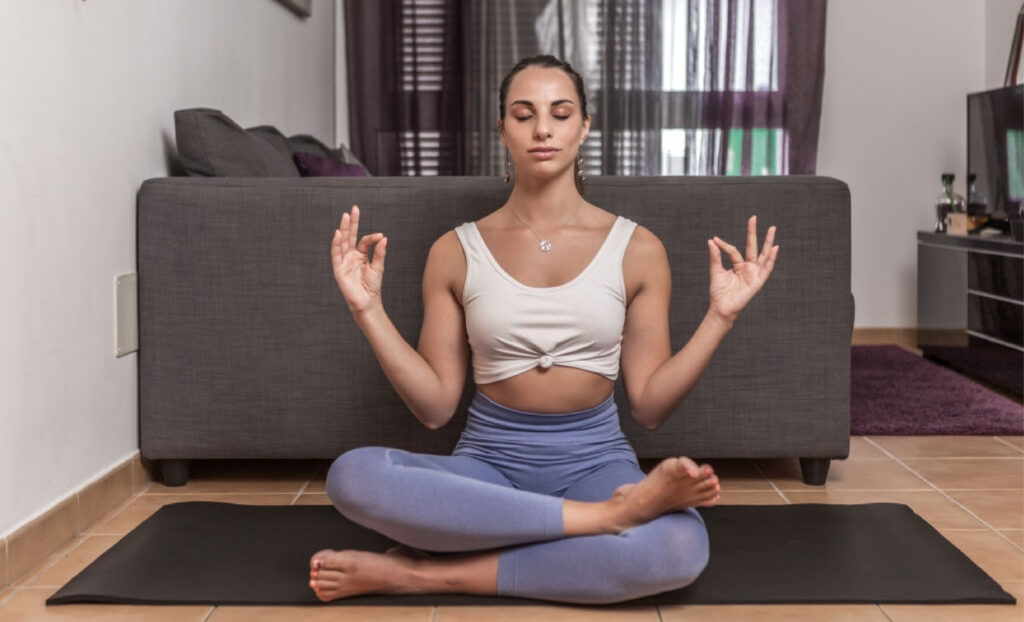Meditation is a practice that incorporates different techniques to achieve a focused, steady, and calm state of mind. Meditation is not a new concept. It has been practiced by people of different religions for more than thousands of years. Read this article about breath meditation to know more about it.
Meditation has been practiced since antiquity. In medieval times, it was mostly used for satisfying religious or spiritual beliefs. However, now it’s not limited to religious or spiritual beliefs. People, regardless of religion or belief, practice meditation because of its effectiveness. In this article, we’ll cover just one type of meditation: breathing meditation, to be specific.
Breathing as a Way of Meditation

Breathing practice is a common technique used in different types of meditations because it is considered vital for achieving mental calmness. There are different types of breathing techniques used for meditation focusing on timing, rhythm, and speed. There are also some meditation methods where breathing plays an important part, and there are also other types of meditations that are solely based on the different types of breathing.
Mainly, there are two types of meditation. They are concentrative meditation and mindfulness meditation. The main goal of concentrative meditation is to work on your concentration. It helps you to focus all your attention on a specific object, and it’s extremely helpful for sharpening your senses.
When it comes to mindfulness meditation, it mainly focuses on achieving a sound mental state. It focuses on particular mental issues such as stress, anxiety, overwhelm, and works on containing them by specific breathing techniques.
Importance of Breath Meditation for a Peaceful Mind

Breath meditation is one of the key factors for achieving a sound and peaceful mind. It affects your mind and body in several different ways to achieve mindfulness.
There are things called alpha waves and beta waves in your brain that control certain emotions. Alpha waves are slower in pace and higher in amplitude. Alpha waves are responsible for the peacefulness of mind and sleeping. When there are enough alpha waves in your brain, your mind will stay calm and relaxed.
On the contrary, beta waves are fast and low in amplitude. Beta waves prevail when you are engaged in any activity involving physical effort or a critical thinking process. Beta waves are responsible for stress and anxiety.
It is possible for beta waves to stay in your brain even if you are not engaged in any activities. This leads to anxiety, stress, and sleep-related problems. By practicing breathing meditation, you will gain better control of the brain waves and balance them to achieve a peaceful mind.
Physical and Mental Impact of Breath Meditation

Breathing meditation can have a huge impact on well-being, both mental and physical. Breath meditation is nothing more than a lifestyle practice. But it will affect your consciousness and change the way you react to different circumstances. Moreover, according to several scientific studies, breath meditation has numerous positive psychological and physical effects. Here are just a few:
- Ability to manage and encounter situations such as anxiety, panic attacks, and overwhelm effectively
- Improved physical issues such as high blood pressure and breathing problems
- Improved sense of consciousness and mindfulness
- Improved stamina
- Increase in oxygen enriched blood and cells with improved blood flow
- Strengthened lungs
Relaxation Music for Breath Meditation

Music is a great source of entertainment. Apart from just entertaining, it comes with many benefits, one of them being stress management. And the good news is that you can use music effectively for breath meditation. Meditation is known as a great and effective method for stress management. And by combining music with meditation, you can calm your nerves in no time.
There are numerous genres of music, and so you need to be picky for meditation music. For example, heavy metal music is not likely to assist you with breathing meditation because it has very fast-paced and aggressive instrumental riffs and lyrics. You need something slow-paced and relaxing. Blues or jazz is very melodious and relaxing at the same time. Apart from that, any ambient sound will also do. After you find the appropriate breath meditation music that resonates with you, you are all set to get started meditating.
Different Breathing Techniques

There are numerous types of breathing techniques used for breathing meditation, and it’s not possible to cover all of them in a single article. Let’s cover some of the most popular ones here.
- Nostril Breathing: This is a very effective way of breathing meditation. The concept is pretty simple. You need to breathe using one nostril while closing another and keep repeating. One popular nostril breathing exercise is called Alternate Nostril Breathing. You can read more about that technique and find instructions on how to do it here.
- Mindful Breathing: This focuses on your breath itself rather than the technique of breathing. Mindful breathing requires you only to pinpoint your focus on your breathing. One form of this mindful breathing is called Breath Watching. Read more about Breath Watching and how to do it here.
- Pranayama Breathing: This breathing method is mainly used in yoga. This is also known as the cleansing method that involves taking breathing with the nose and releasing it from the mouth. According to expert opinion, pranayama is a powerful breathing exercise and it can clean up to 72,000 channels of your body. Learn more about Pranayama breathing in this blog post.
- 4-7-8 Method: This method is widely known and used for relaxing and sound sleep. The idea is to inhale for a count of 4, hold the breath for a count of 7, and extend the exhale for a count of 8. It’s a simple method with surprisingly significant relaxation results.
- Belly breathing: This is another great breath meditation exercise. This requires you to lie down and put one of your hands on your belly. Feel the belly inflate like a balloon on the inhale. On the exhale, the belly should lower and deflate, pushing all the stale air out of the body. Usually, people breathe shallowly, from their chest or even their clavicle area. Belly breathing helps train the body to take full, deep cleansing breaths.
Conclusion
Meditation is not a one-time event, it is a practice. You cannot reasonably expect that trying it once will solve all of your problems. Patience and practice are key factors for meditating properly, and if you keep up with breathing meditation regularly, you will notice the positive results. If you need guidance, contact us at Healing Breath for a free consultation to start you on your journey to wellness.
You can also read: Breathing Techniques In Different Cultures and Religions